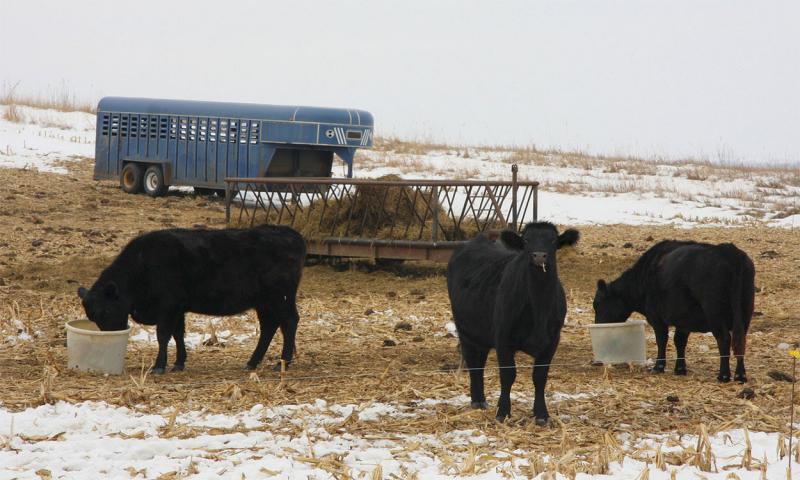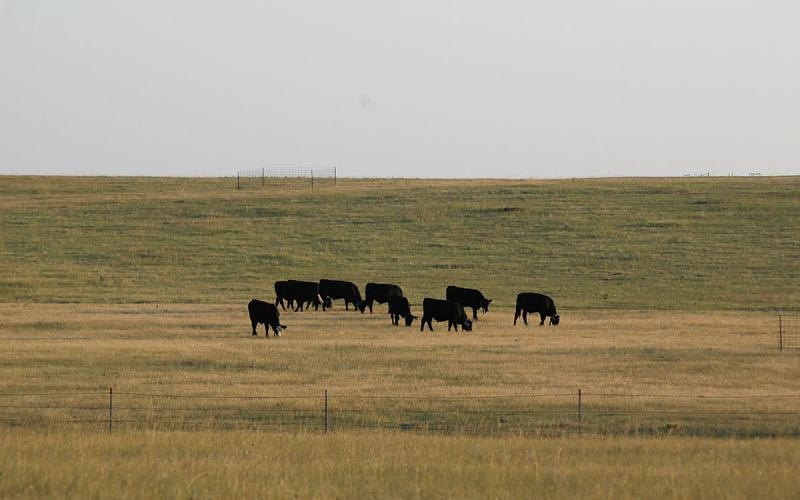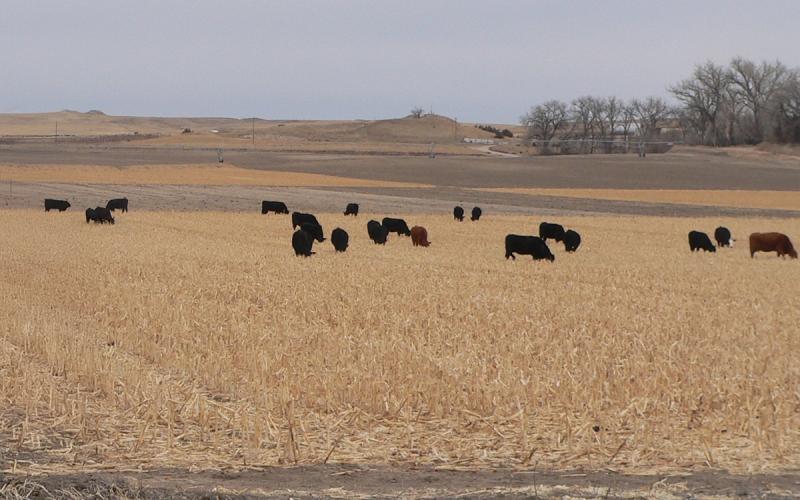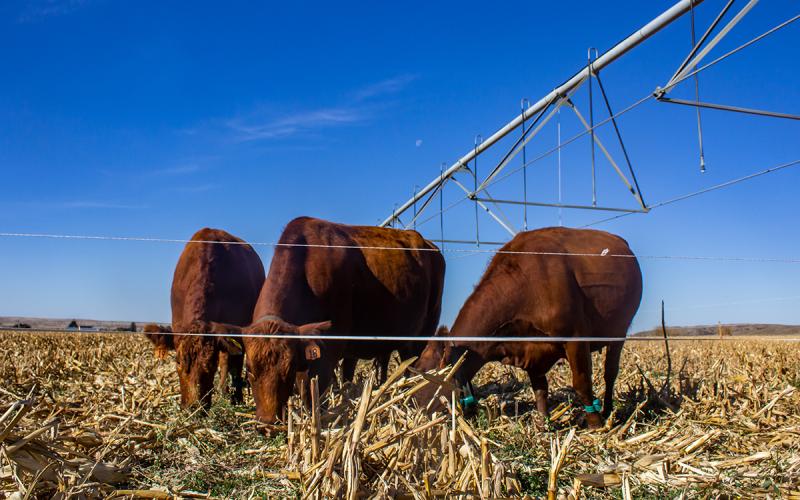
Originally written by Olivia Amundson, former SDSU Extension Cow/Calf Field Specialist, with contributions by Adele Harty, former SDSU Extension Cow/Calf Field Specialist.
During the winter, it is common practice in South Dakota to have cows grazing crop residue. This practice helps reduce the amount of harvested forage needed to maintain a cow for a portion of the year, thus helping reduce annual feed costs. However, eventually, cows may need supplementation when grazing crop residues. Let’s consider some options for when and how to supplement the herd.
When to Start Supplementing
If cows are grazing crop residue there are some key indicators to determine when supplementation may be needed. Manure consistency and body condition are two components to monitor and determine if changes need to be made. For more information on this topic, please read the article, Monitoring Nutrient Status of Beef Cows.
When grazing cornstalks and other crop residues, cows will consume the grain first, followed by the husk and leaf since they contain the highest level of nutrients and are the most digestible. The residue, meaning the leaf and husk left in the field, is related to the corn yield, with approximately 16 pounds of dry leaf and husk per bushel of corn yield. Knowing these numbers will help determine stocking rate and approximately how long cows will have adequate feed on a corn field, with the goal of about 50% utilization of the husk and leaf. The UNL Beef Team developed a Corn Stalk Grazing Calculator for calculating stocking rate and ensuring adequate feed is available for the intended grazing period.
In general, cows grazing corn or milo residue should maintain condition and may gain weight, depending on stage of production and nutrient demands. Based on research from University of Nebraska-Lincoln, there was no difference between protein supplemented and not protein supplemented March calving cows in regard to reproductive performance and body condition. However, based on what is known about cow nutrient requirements for protein being 7.1% during mid-gestation and 7.9% during late gestation, a protein supplement to ensure rumen function and fetal development may be important. The corn residue has an average of 5-5.5% crude protein, which is deficient in protein. Do not force cows to eat the stalk and cob, as these will not meet nutrient requirements.
Why Is Supplementation Important?
While it is nice to put cows out on stalks and forget about them for a while, it is extremely important to continue to monitor if and when supplementation needs to begin. Reproductive efficiency of a herd is one of the leading causes of economic gain or loss depending on the nutrient demands met by the females. Females not meeting that nutrient demand compromise future breeding and pregnancy rates.
Following weaning is one of the easiest and most economical times to put on additional weight prior to calving. In general, this is when females begin to graze crop residue. When evaluating the herd, an ideal body condition score (BCS) for females is no less than 5 for cows and 6 for heifers. One body condition score is equivalent to 75-100 lbs. Depending on cow size and feed intake, it could take approximately 90 days for that female to add an additional condition score.
It’s important to know your cows and what BCS they are in. Cows with a greater BCS can handle longer periods without supplementation compared to cows who have a lower BCS. While we want to ensure cows are at a BCS 5 by calving, if they are too fleshy, dystocia can become an issue, and feeding them to this BCS can be costly.
When we look at time of calving in relation to BCS and subsequent breeding, BCS during early calving versus late can have an effect on subsequent reproductive performance. Research has shown that females calving early can be slightly thinner because they have additional time to cycle and re-breed compared to a female who calves later in the calving season. Early calving cows are defined as cows who calve in the first 21 days of the calving season. Late calving cows are any of those who calve after that first 21-day period.
Considering Supplementation Cost
Based on the current body condition score and determining the need for supplementation, the next decision is finding the right supplement for the situation. As mentioned previously, protein will likely need to be supplemented at some point. Determining whether protein or energy supplementation is needed is the first step. Refer to Clearing up Confusion on Protein and Energy Supplements for more guidance on this. Once the type of supplement is determined, the cost of the available supplements should be evaluated. Evaluate options on a cost per unit of nutrient basis. For instance, if the supplement will be used to provide additional protein, determine the cost per ton of protein for the supplements available. Refer to the Feed Nutrient Calculator to plug in feeds and prices to calculate costs. When considering costs, it is important to consider additional inputs needed to utilize various feedstuffs; feedbunks, feedwagon, cake feeder, tractor, etc.
Take the time to determine if supplementation is needed, what type of supplement is needed and what the most cost-effective option will be for your operation. Each situation will be different; therefore, each operation needs to evaluate their own situation and make the decision that works best for their finances, equipment and labor resources.


